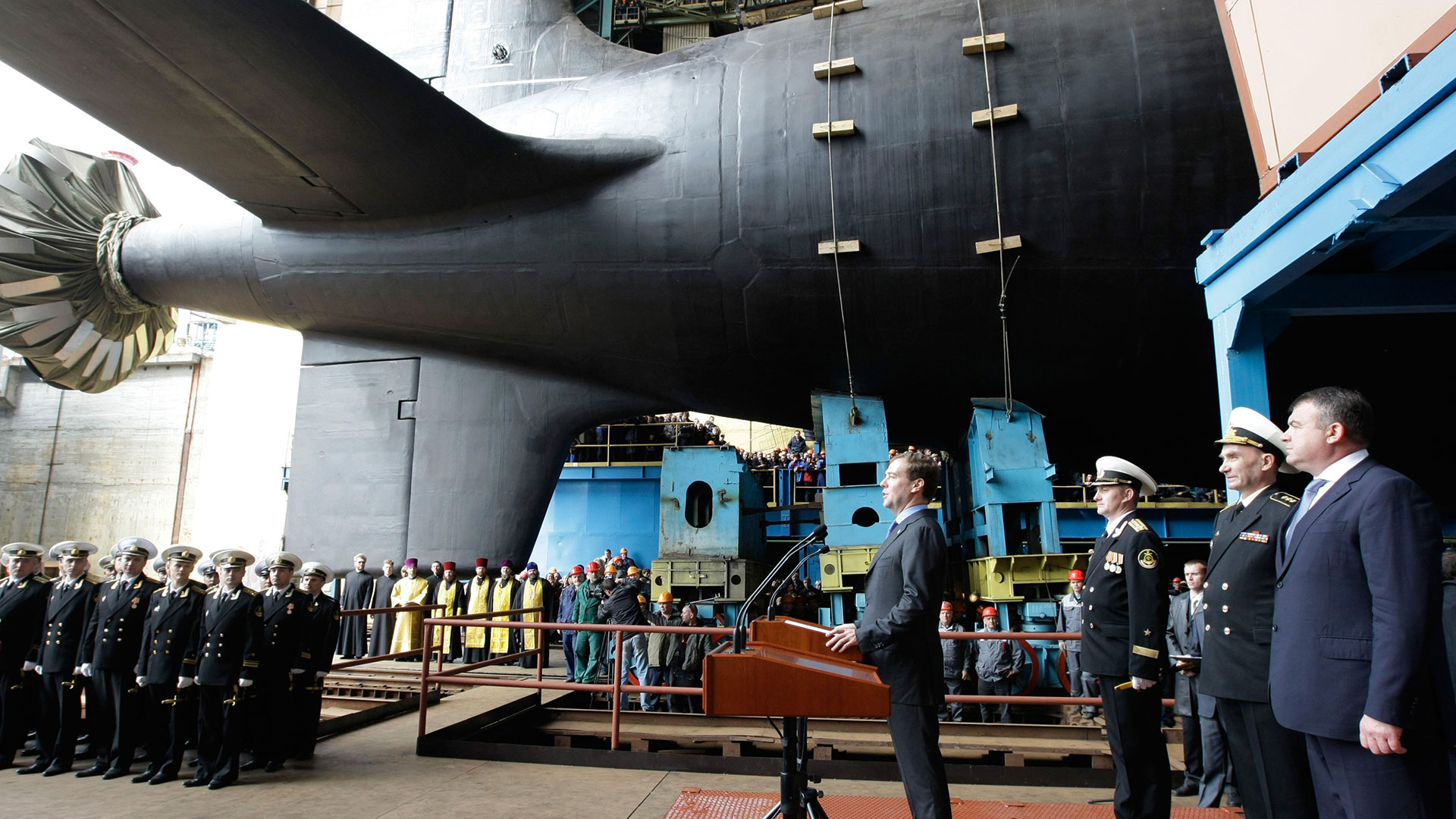

It’s time to dust off your favorite Hunt for Red October jokes, gang, because they’ll rarely be more on-point than they are today. Russia’s latest and greatest nuclear attack submarine, the K-329 Severodvinsk, has officially been certified as ready to deploy for its first combat training mission.
Much about the ship remains unknown—governments tend to be a little hesitant about revealing details regarding heavily-armed submarines that depend on stealth. We do know, however, that Severodvinsk is the first operational member of the new Yasen-Class of submarine. Based on the same general architecture as the Akula-Class and Alfa-Class boats that terrified NATO submarine commanders back in the Cold War days, it stretches 390 feet in length and weighs around 13,900 tons submerged—bigger than either of its predecessors. Yet, in spite of its size, the use of extensive automation is believed to help keep the crew down to 32 officers and 58 enlisted sailors. America’s latest attack submarine, the Virginia-Class, has a crew of around 130—and it’s less than two-thirds the size.
Mass doesn’t keep Severodvinsk from being fast, though. Most Russian sources quote a top speed of around 35 knots, but according to the U.S. Naval Institute, the Yasen-Class’s true flank speed could be as high as 40 knots. America’s Seawolf-Class is only believed to top out between 30–35 knots, though its true top speed is classified.
The Yasen-Class is an exception from traditional Russian submarine design a couple of notable ways. Instead of the hull-within-a-hull design frequently favored by the Russian Navy, Severodvinsk and her kin use a hybrid design, with a light structure built over the primary pressure hull. (Think of it as the submarine version of going from a body-on-frame to a unibody.)
It’s also the first time a Russian sub has used a spherical bow sonar array the way American boats do. Dubbed the Irtysh-Amfora sonar, the system is so large, the ship’s eight torpedo tubes had to be pushed back and canted out to be able to fit around the sonar sphere. But damn the torpedoes—the real threat to NATO vessels is tucked inSeverodvinsk’s eight vertical launch cells, which house up to 40 anti-ship, anti-submarine, and ground attack missiles.
While it may be the freshest boat in the Russian fleet, Severodvinsk isn’t believed to be quite a match for the U.S. Navy’s latest and greatest. The Office of Naval Intelligence believes Severodvinsk isn’t quite as quiet as the Seawolf- and Virginia-Class boats. It is, however, believed to be harder to hear than the Los Angeles-Class submarines that make up the bulk of America’s undersea ships. And the Russian Navy is reportedly already working to make future Yasen-Class boats even more quiet. So it’s safe to say the U.S. Navy isn’t dismissingSeverodvinsk as an empty threat.
“We’ll be facing tough potential opponents. One only has to look at the Severodvinsk,” Rear Admiral Dave Johnson, Naval Sea Systems Command’s program executive officer submarines, told USNI News in late 2014. “I am so impressed with this ship that I had Carderock [the Naval Surface Warfare Center’s ship design center] build a model from unclassified data.”
We’ll give that one ping for effort. But one ping only.